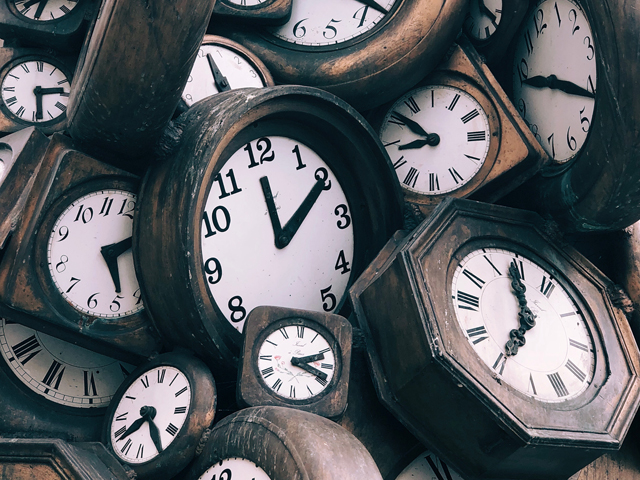Survive The Clocks Going Forward Like A Pro

How to Survive the Clocks Going Forward Like a Pro
A sleep expert's guide to surviving daylight savings.
It's that time of the year that creeps up on parents and in just one little hour, causes complete havoc.
The beginning of daylight savings might mean longer, lighter evenings and the beginning of summer, but if you have young children, it signals the disruption of everything: nap-time, feed-time, bedtime, your time!
However, this year, things are going to be different. With a bit of preparation and planning, your little one isn't even going to notice what mischief the clocks are getting up to.
Preparation can be key
Following a technique of gradual adjustment is a really effective way of minimising the effects of daylight savings, especially with children who are sensitive to change or who are early morning risers.
A week before the clocks change, push your child's bedtime forward by 5 - 10 minutes every few days. For example, if their bedtime is usually 6.00pm, start pushing bedtime to 6.10 pm, then 6.20pm and keep pushing forward. When the clocks change on the Sunday, their bedtime will be (new time) 6.00, which is (old time) 7.00. Whatever time they wake in the morning to begin their day, stick to the new time (acceptable wake up time is between 6-7).
Do the same with your child's nap times and meal times - push everything back till the clocks change.
If your child is especially sensitive to changes and moving things in 10-15 minute increments is too much, begin to process more than a week before the clocks change, nap times and meal times in 5 or 10 minute stages each day.
By the time the clocks go forward - at 2am on Sunday, 7 October, this year - you and your little one will be ahead of the game.
Need additional help?
Re-set your child's body clock by exposing them to natural light in the morning and have an electronic sunset in the evening by dimming lights and keeping the mood quiet and mellow. Cut out screen time during the late afternoon and evening.
Make naps a priority. Exhausted babies and children are less flexible and unable to adapt to change. Rested children sleep better.
However, in the morning don't let your child sleep in if they struggle with their new bedtime, and don't be tempted to extend naps.
If you don't have black out blinds or dark curtains in your little one's room, consider investing in some as even a little bit of light disrupts sleep and the production of the sleep hormone melatonin.
What if the clocks have already gone forward?
Don't worry - you haven't left it too late. If the clocks have already changed, you can begin the gradual adjustment process now. Make everything a little later: naps, snacks, meal-times and, of course, your child's bedtime routine. Expose your little one to sunlight in the morning to help reset their body clock.
If your child doesn't adapt automatically, move their bedtime in 5, 10, 15 or even 30 minute increments over the next few days or week.
If your child is struggling to go to sleep at their new, later bedtime, consider limiting their nap time and have a play outside each afternoon to use up any of their excess energy.
Then as soon as you're home, switch to evening mode: lights low, no screens, calm activities and a soothing bath and bedtime routine. Block out any light coming in from the windows and consider using a white noise machine if you think that might help.
Still struggling?
Do keep an eye out for your baby or child's sleep cues and try not to get too obsessed with the clock. A bit of flexibility is needed; trust that your baby will eventually adapt to the new normal.
Do consider temperature changes. Your child might be too hot in their winter bedding and pjs.
Do stick to a consistent bedtime routine.
Do make their bedrooms, sleep friendly - dark at night and free of screens and excess noise.
Don't worry too much. Whatever method you choose, your child's body clock should begin to adapt by the end of the week or two.
The best thing when the clocks change the time goes forward and our children should sleep an hour later!
MORE



